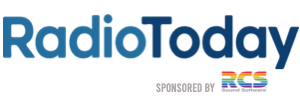Today attention is like a new currency and onboarding is the exchange rate.
The first encounter between a listener and a station, whether it’s via smart speaker, app, car dash or a clip on social media, decides if curiosity becomes a habit. Other entertainment sectors have turned those opening moments into an art form. Radio can borrow the best of it without losing what makes the medium so special: intimacy, trust and that welcoming feeling.
The first 30 seconds: turning a dial into a habit
The importance of effective onboarding extends far beyond radio. Research shows that over 90% of customers believe companies could improve their onboarding processes, highlighting a universal challenge across digital platforms. For radio stations competing in an increasingly crowded audio landscape, where the industry faces ongoing challenges from streaming services, mastering those crucial first moments becomes even more critical.
Streaming services obsess over the first hello. They minimize hick-ups (one-tap play), set context quickly (“Because you liked…”), and make sure the first thing you hear feels intentional. Radio shows can mirror that clarity, by tightening the on-ramp and making the first 30 seconds unmistakable. Sonic branding, a crisp station ID and a single reason to stick around (“News in 60 seconds, then your lunchtime throwbacks.”) beat a rambling tease every time.
Default to play. If the app or stream buffers, fill with a branded stinger or presenter greeting rather than dead air. Even five cheerful seconds can preserve momentum. Promise and deliver, near-term payoff. Not later this afternoon but in the next song. The sooner your promise resolves, the faster a new listener learns to trust you.
Podcasts also teach a useful trick: front-load familiarity. Many shows open with a short, consistent motif so even a distracted listener instantly knows where they’ve landed. A station’s version might be a recognisable sweeper followed by a micro-feature that always hits at the top of the minute – tiny anchors that make serendipity feel structured.
From loyalty cards to listener clubs
Incentives work best when they reinforce identity. Consider how fan communities in gaming or sports personalise rewards. For radio, that means designing listener clubs that feel like membership rather than marketing. Reward behaviours that deepen the relationship. Keep data asks proportionate. If you want an email, earn it with something genuinely useful – show reminders, exclusive sessions, or behind the scenes audio – not a generic newsletter.
Be explicit about frequency and control. Make it obvious how often you’ll contact members and how to opt out. The fastest way to kill goodwill is surprise messages that don’t match expectations. The tone should be invitational, never transactional, and always in service of the listening experience.
Cross-industry lessons, responsibly applied
Here’s where cross-pollination helps and where guardrails matter. Entertainment platforms often use a one-time incentive to punctuate the first step. A radio equivalent can be tasteful and compliant: think a limited “first month of ad-light streams,” early access to a live session, or a merch draw tied to a genuine sign-up moment. Even the vocabulary, like a restrained mention of a welcome bonus, can be reframed as a nudge to explore, not a push to spend.
Here is a practical checklist for responsible adaptation:
- Lead with clarity, not cleverness. Plain-language onboarding flows reduce confusion and bounce.
- Map the golden path. Identify the three actions that most reliably create habits and choreograph the first session to nudge them.
- Instrument, then iterate. Track where new listeners drop. If many bail before the first live voice, bring a presenter greeting forward. If they never discover secondary streams, add a smart prompt after the first song.
- Guard the brand. Any incentive should feel like your station: local if you’re local, specialist if you’re specialist. If it could belong to any app, it probably belongs to none.
- Respect the relationship. Consent, frequency capping and easy exits aren’t just legal boxes to tick; they’re how you prove you deserve a second listen.
Onboarding shouldn’t add gloss for its own sake; it should make that humanity discoverable faster. Do that, make the first moments unmistakable, offer membership over marketing, and adapt the smartest ideas with care, and those first-time listeners will stay.

